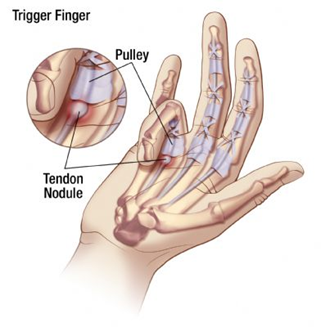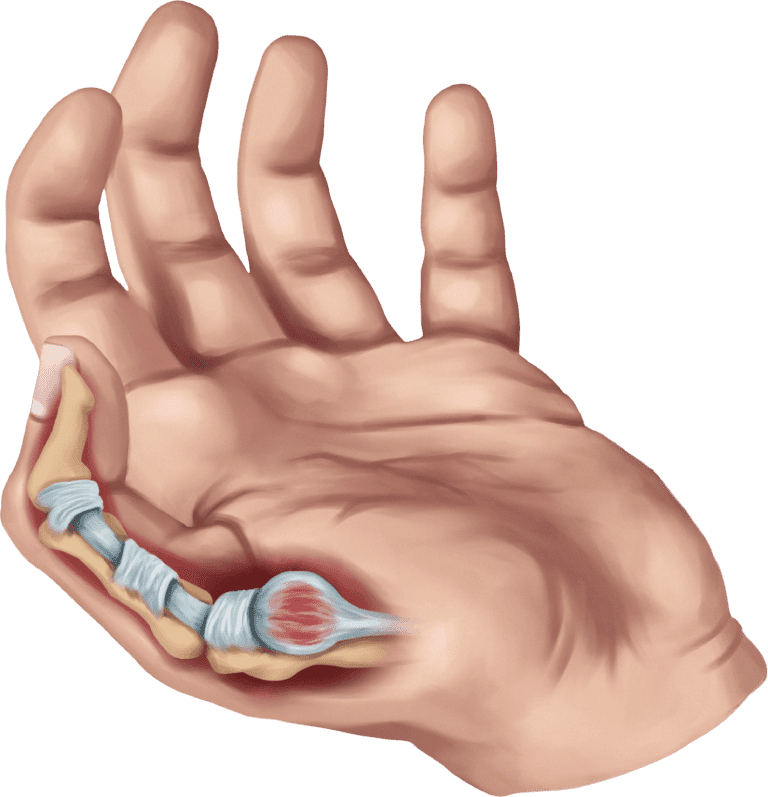Trigger Finger (Stenosing Tenosynovitis): Causes, Symptoms, and Treatments
Trigger finger, also known as stenosing tenosynovitis, is a condition where finger tendons become stuck in a bent position and then snap straight. Learn about its causes, symptoms, and treatment options including rest, splinting, corticosteroid injections, hand exercises, and surgical release. Early diagnosis and treatment are crucial for better outcomes.
Causes:
- Inflammation and Irritation: Inflammation or thickening of the tendon sheath, which guides tendon movement, is the primary cause, leading to catching or locking sensations.
- Risk Factors:
- Repetitive Hand and Finger Movements: Activities involving gripping or grasping increase risk.
- Medical Conditions: Rheumatoid arthritis, diabetes, and hypothyroidism elevate risk.
- Age and Gender: More common in individuals over 40, with women being more affected.
- Hand and Wrist Anatomy: Certain anatomical features may predispose individuals to trigger fingers.
Symptoms:
- Popping or Clicking Sensation: When moving the affected finger.
- Stiffness and Discomfort: Especially noticeable in the morning or after inactivity.
- Pain: At the base of the affected finger or thumb.
- Locking of Finger: The finger may become locked in a bent position, requiring manual straightening.
Treatment Options:
- Rest and Activity Modification: Avoiding aggravating activities helps reduce inflammation.
- Splinting: Immobilizing the affected finger with a splint provides relief and reduces inflammation.
- Corticosteroid Injections: Injecting medication into the tendon sheath reduces inflammation and relieves symptoms in many cases.
- Hand Exercises: Specific exercises improve finger mobility and flexibility.
- Surgical Release: For severe cases or when conservative treatments fail, trigger finger release surgery widens the tendon sheath, allowing freer tendon movement.
Early diagnosis and treatment lead to better outcomes. Consult a healthcare professional for an accurate diagnosis and personalized treatment plan if you suspect trigger finger or experience related symptoms.


